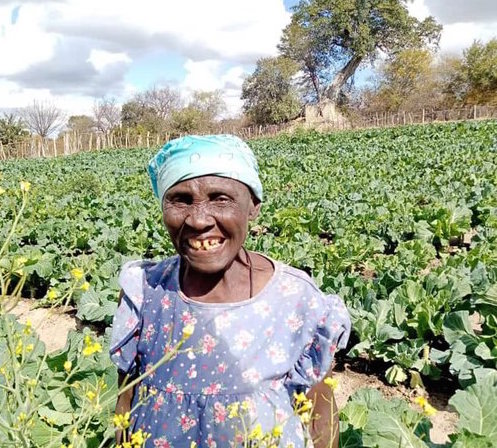|
Getting your Trinity Audio player ready...
|
The Government of Zimbabwe trained over one million farmers on conservation agriculture (CA) and in calculating the concept of community gardens and the use of regenerative agricultural techniques in urban areas so as to elevate hunger at the household and national levels.
Regenerative agriculture is growing quickly throughout the world and Zimbabwe is no different. Landowners and stewards are realizing that the wealth of their business is intimately linked to the health of their land and it is important for land and business owners to see the value of regeneration of their landscape before the alarm bells start going off.
The government of Zimbabwe has been training extension staff to implement the Pfumvudza concept which comprises CA practices to help bring food self-sufficiency to the country.
Pfumvudza is a crop production intensification approach under which farmers ensure the efficient use of resources (inputs and labour on a small area of land to optimize its management and experts are calling for farmers to be educated in regenerative farming in an endeavor to fight the effects of climate change.
Regenerative agriculture is a nature-positive agricultural system that mimics natural processes in the ecosystem in which farmers are working. By fully understanding the local context, farmers can design an agroecosystem that will improve soil health, biodiversity, and the carbon sequestration rate, and increase the economic resilience of farmers.
“The fight against malnutrition has been taken to the grassroots level by both the urban and rural dwellers. Agriculture has been and is still the backbone of the Zimbabwean economy and naturally, everyone is a farmer. Urban agriculture has since been implemented and to this end, a lot of innovative practices have been developed and implemented.
Households have now resorted to urban agriculture in form of nutrition and community gardens to alleviate food and nutrition insecurity. With regenerative agricultural systems, you consider species that will benefit a particular ecosystem, relying much less on external inputs. For example, planting grass or trees alongside coffee plants. ” said Mr. Bernard Bepe, the Business Scheme Manager at Agriculture for Rural Development Authority (ARDA).
Regenerative agriculture is a holistic system that works in harmony with its local environment. Practices such as using cover crops, crop rotation, no-tillage, diversification (when possible, with trees), and others are applied for that purpose. Selecting native species aligned with the cash crop you are working with ultimately will improve the climate resilience of the farmers’ operations.
Community and nutritional gardens have acted as a linchpin in enhancing food security and dietary diversity to combat malnutrition.
They have become a source of livelihood for most women (especially widows ) and families in Zimbabwe considering the low rate of employment and the unstable economy. Implementing the concept of community gardens in urban areas will be of great importance to elevate hunger.
“As the name suggests, it’s a place, position, area that has been designated or allocated or reserved on a small scale basis for the sole purpose of production of nutritious crops mainly vegetables ( leaf, tuber, fruit, legume, culinary herbs) at homesteads or community level which are also integrated with small livestock (rabbits, poultry, fish and goats) and fruits with the objective to address food and nutrition security using sustainable and smart conservative and regenerative methodologies.
The household gardens can have different shapes, land use and designs (keyhole gardens, mobile gardens, containers, moon shape, and many more) depending on the household set up,” said Mr. Bepe.
There is a need to partner with Non-Governmental Organisations (NGOs) for the full realization of Community gardens in urban areas. Plan International and World Vision are implementing such kind of a project in Bulawayo working with the Bulawayo city Council.
“Nutritional gardens can be implemented at the household level in high, medium, and low-density urban settings of Mutare. As a norm, most gardens are located in the backyards closer to the kitchen. If land becomes a limiting factor, residents can also utilise the front areas of the homesteads. Some residents have resorted to recycling and reusing empty containers, empty bags, and motor vehicle tyres as a means of expanding and reusing containers of different shapes and sizes depending on the gardening. Container gardening can be used mostly by those residents living in flats. The grey water from the kitchen can also be recycled through reuse as a source for irrigation of the crops.
In Mutare, community gardening can be practiced in public to private open spaces and mainly high-density areas as they are hot spots for malnutrition and poverty. The locations from Fern Valley, Chikanga, Sakubva such as council breathing spaces, old recreational facilities, churches, institutions of learning, and areas with future developments. All public spaces in urban settings have to follow council by-laws and guidelines. In Mutare, there are several community gardens that are doing well by providing the local residents and supermarkets with fresh daily vegetables,” he said.
Mutare City Council can partner With World Vision or Plan International by drilling and installing boreholes for a group of 10 members who can identify potential land in suburbs and they can start a community garden.






